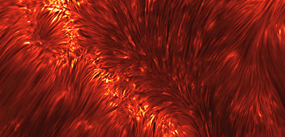Syllabus
AST 383 ORIGINS OF THE CHEMICAL ELEMENTS -- THE ESSENCE OF NUCLEOSYNTHESIS
David L. Lambert
RLM 15.208, 471-3300, dll@astro.as.utexas.edu
Meeting time: T,Th 9:30-11:00
Textbooks:
An Introduction to Nuclear Astrophysics by R.N. Boyd (University of Chicago Press, 2007) - this will be supplied courtesy of the Harte Chair.
Cauldrons in the Cosmos by C.E. Rolfs and W.S. Rodney (The University of Chicago Press, 1988). This out-of-print book covers some of the same material as Boyd's book but gives much more detail on experimental determination of nuclear reaction cross-sections.
Nuclear Physics of Stars by C. Iliadis (Wiley-VCH, 2007) may be considered to be an updated and expanded version of Rolfs and Rodney.
The Physics of Stars by A.C. Phillips (Wiley, 2nd edition) is an excellent introduction to the PHYSICS of stars covering basic physics involved in their formation, evolution, and nucleosynthesis.
Stellar Evolution and Nucleosynthesis by S.G. Ryan and A.J. Norton (The Open University and Cambridge University Press, 2010). Similar to Phillips book but more pedestrian with worked examples and some significant omissions.
Nucleosynthesis and Chemical Evolution of Galaxies by B.E.J. Pagel (Cambridge University Press, 2nd edition, 2010). This provides a thorough coverage of the course material.
All of these books will be in the Peridier Library on reserve.
ASSIGNMENTS:
Occasional problem sets will be distributed.
Each student will be expected to prepare short papers (one or two pages) and accompanying brief presentation drawn from current or recent literature in each of the following areas:
. stellar evolution and nucleosynthesis - theory and/or observation
. nuclear astrophysics - theory or experiment
. galactic chemical evolution
The chosen literature references should be approved by me first. And I can provide suggestions.
After the first couple of weeks of classes, I expect to close the Tuesday or Thursday class with one of these five-to-ten minute presentations - volunteers will be forewarned!
SYLLABUS:
- INTRODUCTION
- Discovery of the atoms and elements
- Range of stable elements (H to Bi), unstable elements (Tc, Pm; Th and beyond including manmade heavy and superheavy elements)
- Introduction to compositions of earth, meteorites, stars etc.
- Emergence of the ida of a cosmic abundance pattern
- Realization of the idea that cosmic compositions has evolved (discovery of metal-poor stars)
- Development of understanding of origins of chemical elements -
- Gamow's primeval atom, seminal ideas of Burbidge, Burbidge, Fowler, and Hoyle and of Cameron
- Outline of current understanding of major processes and nucleosynthesos sites
- COMPOSITION OF ASTRONOMICAL OBJECTS - SURVEY
- The Standard compostion - Sun plus meteorites plus H II regions plus theory, examples of present and past tables
- Sun - photospheric abundances, chromosphere, corona, solar wind
- Meteorites - carbonaceous chondrites, occluded gases, chondrules, emdedded circumstellar/interstellar grains
- Stars - main sequence and evolved, single and binary, stable and unstable (novae, supernovae) insights into stellar nucleosynthesis and chemical evolution of stellar systems (binary, cluster and galaxies)
- Gas - interstellar, intergalactic - cold, cool and hot
- Galactic cosmic rays
- INTRODUCTION TO NUCLEAR ASTROPHYSICS
- Nuclides, valley of stability, driplines, mass formulae decay mechanisms
- Nuclear reactions: experiment vs theory
- Classification of reactions
- Charged particle reactions - S factor and Gamow peak, screening
- Sample Reactions
- Statistical theories
- Frontiers for experiments: LUNA et al., radioactive beams
- Neutron capture reactions - basic ideas, experimental methods, illustrative results, excited states
- Weak interactions
- Primordial nucleosynthesis
- Standard models of Big Bang and Particle physics
- Standard nucleosynthesis - predictions and observational tests:
- He/H, D/H, He-3/H, and Li-7
- Non-standard primordial nucleosynthesis
- Nuclear reaction - cycles, chains and processes
- H-burning - pp-chains and CNO-cycles - NeNa and MgAl cycles
- Explosive H-burning: hot CNO-cycles, hot-pp chains, rp-process
- He-burning - triple alpha-process
- Later stages of hydrostatic burning - C et al.
- Explosive nucleosynthesis including the nu-process
- Massive stars
- Introduction to the top of the HR-diagram - key processes in stellar evolution and nucleosynthesis
- Hydrostatic burning - processes and timescales, neutrino losses, weak s-process
- Review of Type II supernovae calculations: nucleosynthesis and stellar remnants and 1D, 2D and 3D calculations
- Observational checks on predictions on pre-SN stars
- O to WR stars, MS to red supergiants
- Observational checks on SN predictions - SN remnants
- Low mass stars
- Introduction to these stars in HR-diagram
- Summary of nuclear burning and dredge-ups
- Third dredge-up - history, role in s-process, hot-bottom burning
- Observational scrutiny - stars, grains in meteorites, planetary nebulae,
- Binary stars
- Novae
- Type Ia supernovae
- Galactic cosmic rays
- Origin and compositions
- Agents of nucleosynthesis
- Synthesis of trans-iron elements
- Processes - p, r, and s
- Detailed discussion of dissection of the standard abundance distribution
- Discussion of weak, main and strong s-processes
- Discussion of the r-processes and astronomical evidence
- Chemical evolution of stellar systems
- The Galaxy and other galaxies - models and observations
- Summary and outstanding problems
- Origins of the elements - what can we account for?
- Assignment of elements to sites
- Outstanding problems in primordial nucleosynthesis, stellar nucleosynthesis, nuclear astrophysics, and abundance determinations
